by Virginia King, Mystery Author @selkiemoonbooks
 Building an email list is regarded as the Holy Grail of book marketing. You can:
Building an email list is regarded as the Holy Grail of book marketing. You can:
- Keep fans engaged with ARCs, freebies, giveaways, and updates
- Tantalise fans between books with sneak peeks, witty blog posts, and quizzes
- Build buzz around new releases with pre-orders and social shares, while a ‘street team’ posts early reviews
Best-selling indie authors who offer their formulas as courses attribute much of their success to lists. But do they work for everyone? Especially with readers receiving emails from multiple authors each month?
To learn how to turn subscribers into fans, I’ve followed authors with different styles and I’ve downloaded free ‘lead magnets’ and signed up to newsletters across a range of genres.
The Four Stages of an Author
Marketing expert Chris Syme defines four stages in an author’s evolution and what promotions to use at each stage. From Stage 1: one or less published book, a day job, less than 50 sales a month, no marketing budget; to Stage 4: multiple titles, full-time writing, a comfortable salary from sales, a monthly marketing budget over $1000.
The Broadcast Email
These stages explain why Stage 4 authors often use broadcast emails, not newsletters. Catchy subject lines may increase open rates, but they’re preaching to fans: new releases, a few teaser lines, a cover image, retail links. Any ‘personal’ content is crafted to close the sale, for example:
My mother always taught me to tell the truth. Now I sit at my keyboard and tell lies all day. LOL. Can you pick the lies from the truth in After Dark?
The Update Email
Update emails are short and irregular. Successful indie author EM Kaplan (Josie Tucker series, Rise of the Masks series) sends emails when she has news. Her updates are often brief and she experiments with content: new releases, special offers, snippets from her blog, even books on sale by other authors. Her subject lines reflect her trademark humour, for example: Funny, Snarky, and ON SALE. Her subscribers respond by buying her books. This email did well for her.
The Newsletter
Usually monthly, subscribers can rely on the regular newsletter to follow a familiar format that also guides the author’s content.
1. The ‘Level Zero’ Newsletter
Book blogger Renee Conoulty began her list when she enrolled in a writing course. Her first newsletter had eleven subscribers including herself and her mother, resulting in four opens and one click. Gradually she created a free flash fiction collection exclusively for subscribers, then her first novel (Don’t Mean a Thing). Her niche is in a corner of romantic fiction and her monthly newsletter follows a three-part structure. Renee also A/B tested subject lines: 50+% opens for listing the contents: A touch of truth, invisible bunnies, empty fiction and blank screens; 30% for posting her name. Here’s a sample.
2. The ‘Sharing Content’ Newsletter
Traditionally published author Keith Stevenson (Horizon) entertains subscribers in his newsletter “Beyond” with links to his research: scientific content that fascinates and inspires him as a sci-fi writer. He says, “I’m not a quick book writer, so there’s no point banging on about my works in progress. The newsletter gives me a regular schedule to write about interesting things and recycle the articles on my blog.” Here’s a sample.
3. The ‘Author Brand’ Newsletter
Traditionally published romance author Tess Woods (Love at First Flight) created a big following for her personal brand using a relaxed warm style, giveaways and quizzes. Her monthly “Tess Woods Newsletter” follows a regular format, packed with content and photos: book news and appearances, tips for writers, a recipe from another author, a review + interview with a different author, a quiz. Cross promotion provides fresh content and finds new fans. Here’s a sample.
Raining Chocolate Frogs
Some authors at Level 3 and 4 offer a monthly prize for subscribers, ranging from a $100 Amazon voucher (Diane Capri) to a fair-trade gift (Tess Woods). Subscribers don’t need to open or click to enter, but Tess says giveaways attract subscribers (it’s worked for her) who then won’t stay around for the monthly prize if the newsletter isn’t interesting.
A Subscriber is NOT a Fan – Yet
Indie authors at Stages 1 and 2 have the task of turning subscribers into fans before they become unsubscribers! Subscribers can enter a list from giveaways, joint promotions, and free lead magnets, but:
- have they read and liked the freebie?
- do they want to hear from the author again?
- will authors get interaction if readers subscribe to multiple lists?
The Automated Email Sequence
We’re told that the automated sequence converts new subscribers into fans, who then go on to receive the above email types. Here’s advice on the timing and content of a sequence: Bryan Cohen – three free webinars, and Chris Syme – free webinar.
Spying on Five Mystery Authors
 To see some email sequences in action, I chose five books in an InstaFreebie group promotion in October, then tabulated the authors’ emails. Each author has a different coloured tick.
To see some email sequences in action, I chose five books in an InstaFreebie group promotion in October, then tabulated the authors’ emails. Each author has a different coloured tick.
Notes on the email sequences
- Four welcome emails arrived almost at once
- Over 30 days, the number of emails from each author varied: seven, six, six, four, one.
- Subject lines were mostly creative
- The teaser by one author hinted at interesting content to come
- Email styles varied from a plain ‘letter’ addressed ‘Hi’ without headings or images, to bannered ‘newsletters’ addressing the subscriber by name, several ‘topics’ plus multiple photos
Lessons Learned
- Authors in a group promo could stagger their welcome emails
- Early emails set the tone for the author’s style – funny, formal, spiritual etc
- When authors outlined what to expect from their newsletters, I felt respected
- Over several newsletters, a relaxed chatty style wooed me – surprised!
- Offering extra freebies or repeat freebies creates reasons to keep in touch
- None of the authors added ‘Mystery Author’ to their sender name – recommended
- Too many photos don’t load, especially on mobile devices, and the email may go into ‘promotions’ and get overlooked
- Emails every few days seem too often, but if they’re read they do create a connection – surprised!
- One author sent one email only, three weeks after my download: 1. I wondered who she was. 2. It was a regular ‘newsletter’ to fans with content that didn’t feel personal to me as a new subscriber – salutary
- One author asked me to buy the book I’d already received for free – keep the sequence updated!
- Most authors assumed their free book had been read after a few days – how likely?
From the Gurus
- Be relaxed and personal, let them see who you are
- Interaction is key – ask a question, give readers something to click and a reason to click
- Keep in touch and keep it simple
- Use the 80/20 rule: 80% compelling content/20% sales promo
- Don’t be afraid to ask for sales
An Email Provider with Automation
My free MailChimp membership didn’t include automation so I lost the momentum with new subscribers that a sequence creates. Here’s what Bryan Cohen says on the subject. I’ve now switched to MailerLite (easy to use with responsive templates and fast technical support, plus all memberships, including free, come with automation) and I’m creating an email sequence for the first time. An unexpected benefit is that the interaction feels personal. I’m gradually sharing the essence of what inspires my books and asking questions that spring from that. Bryan Cohen is right, it’s like a first date.
When Email is ‘Graymail’
For an opposing view on all of the above, check out Derek Haines’ post about ‘graymail’ – emails to which a user has subscribed, perhaps to receive a product or service, but then has little interest in receiving afterwards.
Want to Snoop?
If you’d like to spy on my L-plated email sequence, download my free ghost story Laying Ghosts. It’s a one-hour adrenaline rush, so you might like to read it, too!
 Many thanks to Molly for hosting this guest post and to the authors who generously answered my questions and provided links to their newsletters.
Many thanks to Molly for hosting this guest post and to the authors who generously answered my questions and provided links to their newsletters.
Virginia King is the author of the Selkie Moon Mystery Series – psychological mysteries with a mythical twist. The First Lie has won a BRAG Medallion. She lives with her husband in the Blue Mountains west of Sydney and has two pet alpacas, Toffums and Andy. Visit her website and like her Facebook page here.
Note from Molly: I invite you to check out my novels on Amazon, join my Reader’s Club for freebies and book news, and follow me on Twitter. This original content is copyright protected. Thank you so much. Mwah!
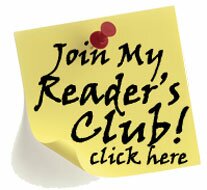
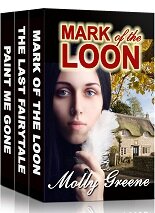
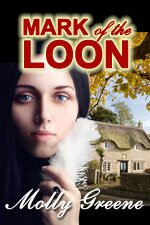
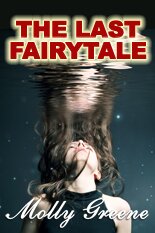


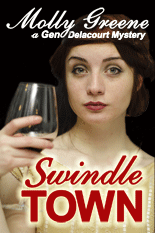
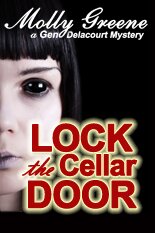
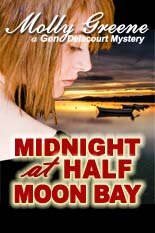
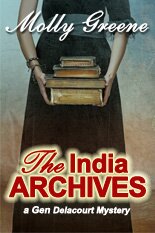

Comments are closed.